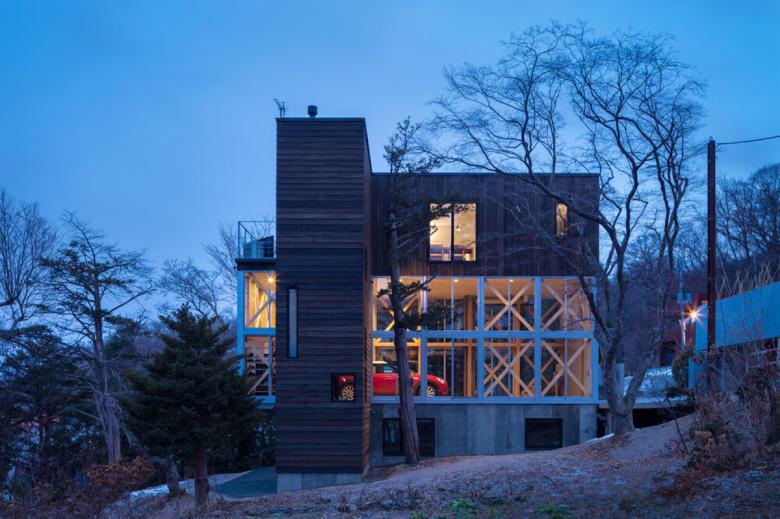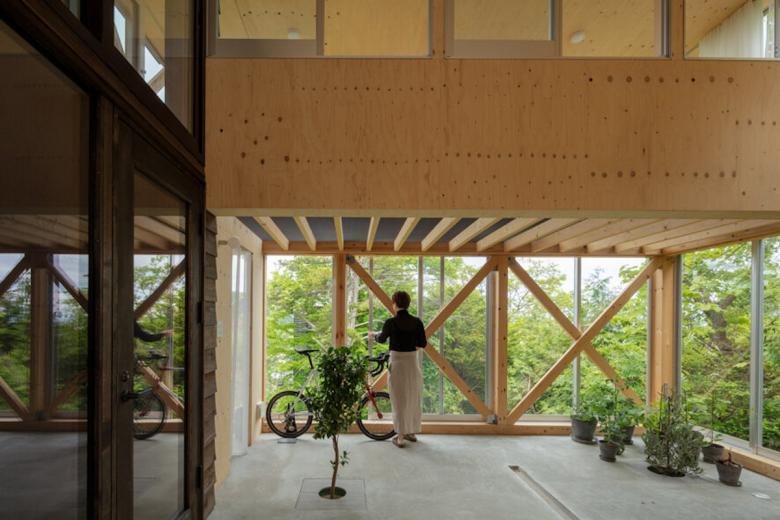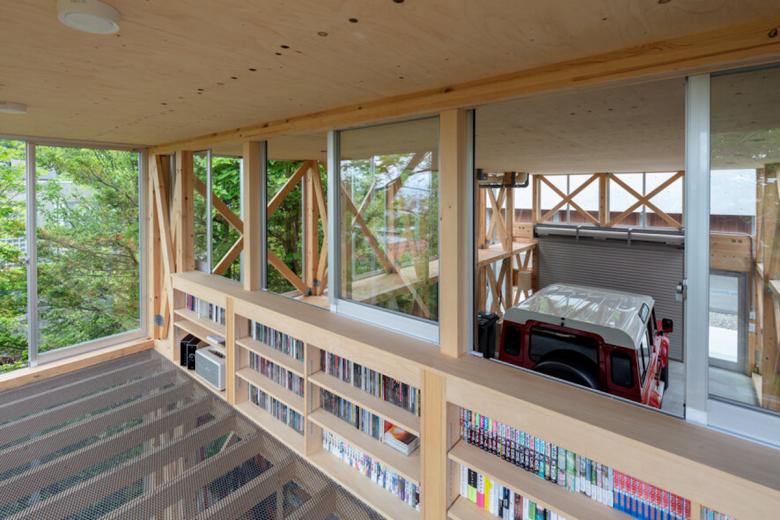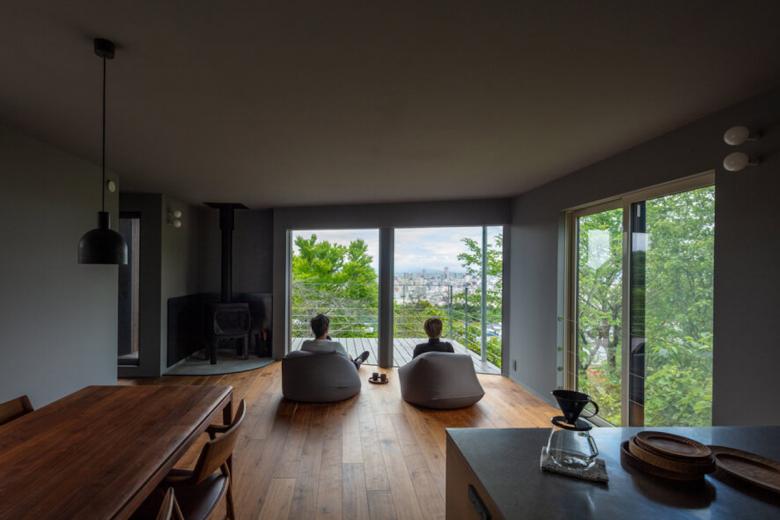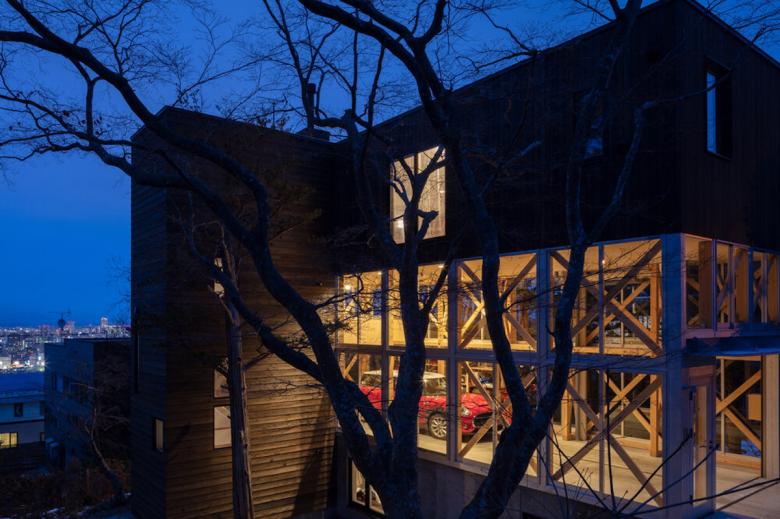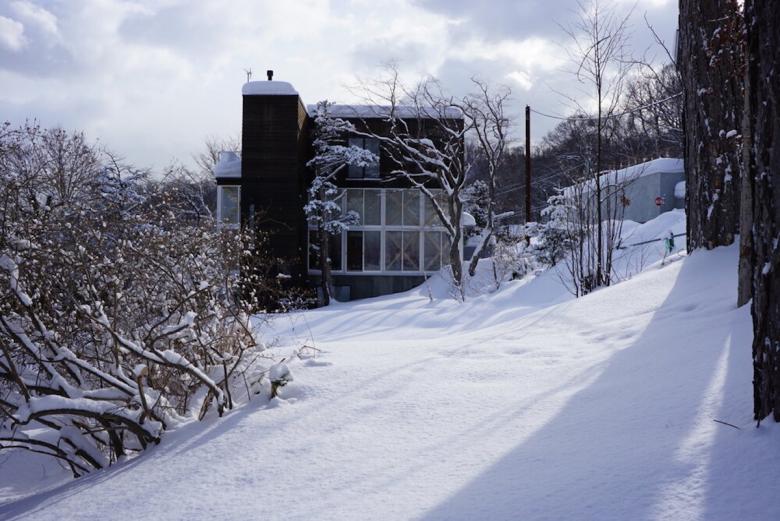The site overlooking the center of Sapporo is located almost at the top of a residential area spreading out like a hill at the foot of Mt. The client, a design firm, had three clear requests. The first was to preserve the existing trees on the site as much as possible. The second was to provide easy access for people, vehicles, and heavy equipment to the house from the front road on the south side, which is about 2.5 meters higher than the site level. Third, the house should enjoy a distant view of the city center and the Ishikari Mountains to the north.
The semi-subterranean bedrooms are placed in a location that avoids the existing trees on the site, and the RC slab ceiling is used to ensure access to the house from the road. On the other hand, in order to secure a distant view, it was necessary to place the living room space at a level 4.5m higher than the RC slab, taking into consideration the topography of the surrounding site, the height of the neighboring houses, and the location of tall trees. In other words, it is as if one volume of the house is separated from the others. The large "empty space" between the houses was physically and structurally necessary to fulfill the three aforementioned requirements, but from a construction cost perspective, it was also desired to be "empty". Therefore, we wanted to create a place where scenery and life intermingle by using a part of the structural frame exposed in the "empty space" as a shelf and covering the outside with a simple non-insulated sash to function as a "storage space for show. This is an attempt to increase the value of the "empty space" while keeping costs down. While this space literally has the practical function of storing various things, it also plays the role of "visualizing" the lifestyle and personality of the residents through their things, and the information that seeps out of the "empty space" becomes an opportunity for the residents to connect with their neighbors.
The configuration in which the insulated living space sandwiches the open space from above and below, which can be called "outside" in terms of the thermal environment, may seem inefficient in Hokkaido, where the goal has been to achieve uniform indoor temperatures during the winter. On the other hand, the "unevenness" of the indoor temperature due to the site conditions and the client's desire for "open spaces" inevitably created by the site conditions could lead to the creation of new activities throughout the four northern seasons.
In fact, however, there is no condensation or freezing on the glass surfaces even during the harsh winter season, so the guests can enjoy their hobbies in peace during the day on sunny days. In the summer, the sliding doors open to allow cool mountain breezes to pass through, allowing you to enjoy events with friends regardless of the weather. In addition, the lower floor, which is semi-underground, provides a close view of the soil and flowers, the middle floor, which is semi-outside, provides a middle view of the neighborhood, and the top floor, which is raised to its legal limit, provides a distant view of the city center and the mountains.
Translated with www.DeepL.com/Translator (free version)

